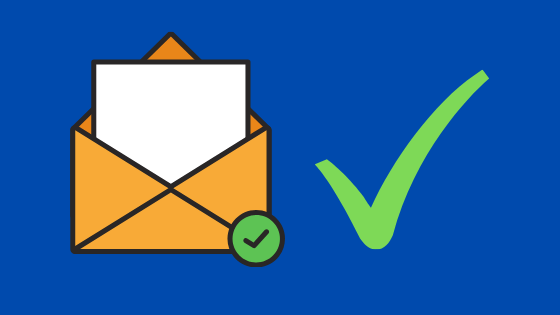In the digital age, where the security of our online accounts and personal information is paramount, email verification codes have emerged as a crucial component of online identity verification and protection. Whether you're signing up for a new online service, resetting your password, or confirming your identity, you've likely encountered email verification codes. These codes play a vital role in ensuring that you, and only you, have access to your accounts and data.
In this comprehensive guide, we'll delve deep into the world of email verification codes, providing insights into what they are, how they work, and their significance in online security. By the end of this journey, you'll have a clear understanding of email verification codes and their role in safeguarding your digital presence.
What is an Email Verification Code?
An email verification code, often referred to as a verification token or verification PIN, is a unique alphanumeric code sent to your registered email address. Its primary purpose is to confirm your identity during various online activities. Email verification codes are a critical element in multi-factor authentication (MFA) and two-factor authentication (2FA) systems, which enhance the security of your online accounts.
How Email Verification Codes Work
The process of using an email verification code typically follows these steps:
Request for Verification: When you perform a sensitive action, such as creating a new account, resetting a password, or attempting to access your account from an unrecognized device, the online service will prompt you to verify your identity.
Email Notification: Upon requesting verification, the service sends a unique verification code to your registered email address. This code is often time-sensitive and expires after a short period to enhance security.
Code Entry: You access your email inbox, find the email containing the verification code, and retrieve the code. Then, you enter the code into the required field on the service's website or app.
Validation: The service validates the entered code against the one it generated and sent to your email. If the codes match and are within the valid timeframe, your identity is confirmed, and you can proceed with the requested action.
Access Granted: Once your identity is verified, you gain access to your account or complete the desired action, such as setting a new password.
The Role of Email Verification Codes in Online Security
Email verification codes serve as a critical layer of security for various reasons:
1. Identity Verification: Email verification codes ensure that the person initiating an action or accessing an account is the legitimate account holder. This prevents unauthorized access and protects your personal information.
2. Multi-Factor Authentication (MFA): MFA adds an extra layer of security by requiring something you know (password) and something you have (email verification code). Even if a malicious actor obtains your password, they would still need the email verification code to access your account.
3. Protection Against Unauthorized Changes: When making significant changes to your account, such as updating contact details or changing the password, email verification codes act as a safeguard. They prevent unauthorized modifications that could lead to identity theft or data breaches.
4. Account Recovery: In the event of a forgotten password or a compromised account, email verification codes are often used to verify your identity during the account recovery process. This ensures that only authorized users can regain access to their accounts.
Common Use Cases for Email Verification Codes
Email verification codes are used in a variety of online scenarios, including:
Account Creation: When signing up for a new online service or platform, you may receive an email verification code to confirm your identity and activate your account.
Password Reset: If you forget your password or need to reset it, the service may send an email verification code to your registered email address to ensure that you are the account owner.
Device Verification: When attempting to log in from a new or unrecognized device, an email verification code may be required to verify your identity.
Two-Factor Authentication (2FA): Many online services offer 2FA, where you receive an email verification code along with entering your password as an additional layer of security during login.
Account Recovery: In cases of account compromise or lockout, email verification codes are used to verify your identity during the account recovery process.
Change of Email Address: When changing the email address associated with your account, email verification codes are often used to ensure the validity of the new address.
The Security of Email Verification Codes
While email verification codes are a robust security measure, it's essential to use them wisely and take precautions to keep your email account secure:
1. Protect Your Email Account: Your email account is the gateway to receiving verification codes. Ensure that your email account is well-protected with a strong password and 2FA if available.
2. Beware of Phishing: Be cautious when receiving unexpected email verification codes. Verify the sender's authenticity and never enter codes in suspicious emails or websites.
3. Use Unique Codes: Each email verification code is typically valid for a single use or a short time. Avoid sharing or reusing codes to maintain security.
4. Check Email Origin: Before entering a verification code, confirm that the email containing the code is from a legitimate source. Scammers may attempt to trick you with fake verification emails.
5. Monitor Account Activity: Regularly review your account activity for any suspicious actions or login attempts. If you detect unauthorized access, change your password immediately and contact the service provider.
In conclusion, email verification codes are essential tools in today's digital landscape, enhancing the security of your online accounts and protecting your personal information. Understanding their role and using them wisely is crucial for maintaining a secure online presence and safeguarding your digital identity.



